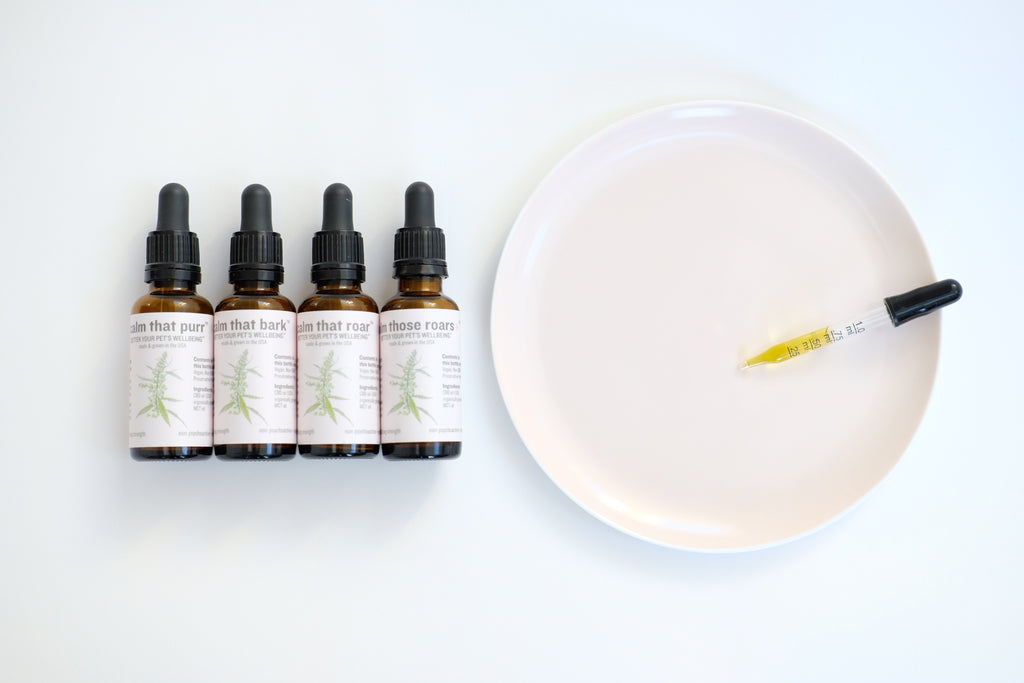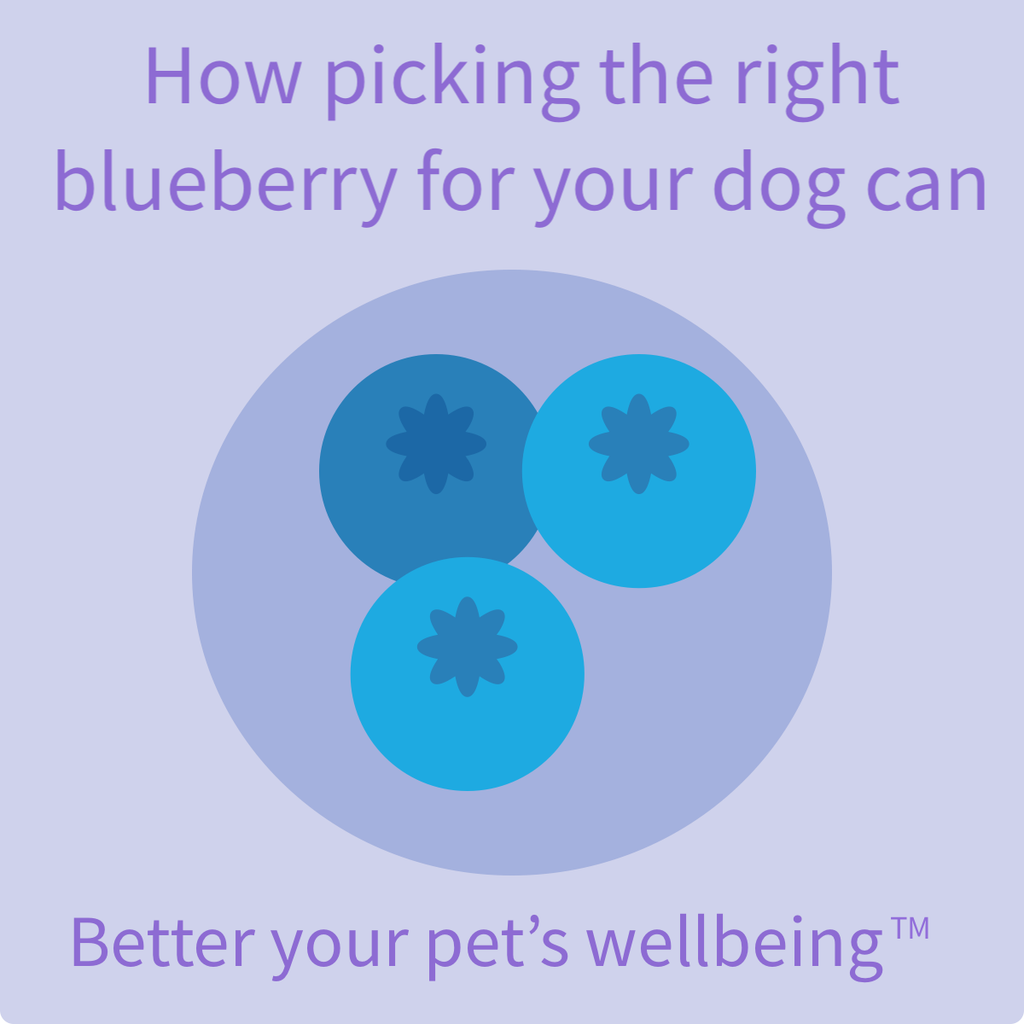Scientific Pet Wellness
Watch Our Video: Diet & Your Dog
Diet & Your Dog is part 1 in a series of videos that will explore ways not only CBD can help your pet, but how incorporating other techniques is beneficial too.
Food can affect your dog's anxiety, pain, inflammation response system, overall wellness, allergies, and disease. What you do for your dog at a young age makes a big difference in the future.
Does Practicing Your Own Health Wellness Spill Over into How You View Your Pets?
I was talking to someone this past weekend who is to be what I would consider health and fitness-savvy. But when the topic of pet nutrition came up, she admitted, she was struggling. She had 2 young children and 3 dogs at home. As we all know, that is a lot to juggle on its own merit. Then you learn that one is a senior pup, and one is a food picky puppy who also goes through vomiting bouts. Against the advice of her vet, she took her new puppy off the “Vet recommended Science Diet” and put all of her dogs on a dehydrated coated kibble, where they all are doing much better. I gave her some other tips on things she could do to incorporate a little extra nutrition to all of her dog's food, such as topping it with some raw goats milk. Not only had she mentioned she was struggling in streamlining everything, she really did not have the knowledge about it either.
This makes sense though. Sometimes because I try to live and breathe health and wellness for pets, I forget that not everyone has the same exposure to the same resources I do. A pet nutrition blog is not next to the “Top 10 Vegetarian Recipes” or the “Sugar Is Bad For You” article. But did you realize the carbs in your pet's kibble also breaks down into sugar, and it’s bad for them too?
It’s easy to assume that a person who cares about their own wellness will transfer this the same amount of attention into their furry family members. The individual may have an up to date pet binder with all their latest vaccinations, schedule annual vet visits, or even establish their pet’s own section in the bathroom medicine cabinet. But the truth is that a handful of us, despite claiming we would do anything for our pets, may not remember the last time our beloved pooch received that important vaccination—or that one time when our family veterinarian strongly insisted that Coco should have her teeth cleaned more often and lay off on those beef treats.
The unfortunate reality is this: we love our pets, but sometimes this love struggles between the balance of too much or too little when it comes to overall wellness. A prime example is the following.
A dedicated dog owner admits they often feed their dog more than the suggested serving amount of treats per day; however, because the brand claims to use all-natural ingredients they found it perfectly safe to offer five or six more treats despite the original two daily. Now we take a look at the label. Surprise! Ironically, the main ingredient is corn flour, with bacon and other meat bi-product as the fifth and sixth listed ingredients. To this the owner finds themselves stuck in a moment mixed of bewilderment and embarrassment. The nutrition label was always there. Why didn’t they read it or, better yet, compare brands instead of carelessly gravitating towards how the item is marketed. Unfortunately, because of how AAFCO (Association of American Feed Control Officials) sets nutrition guidelines for pet ingredients, we must do a lot of our own due diligence or ask for guidance from trusted sources in the pet nutrition field. Their guidelines are not always in the best interest of the pets, but that is for a different blog.
Another reality is this: as owners, and as long as a person isn’t intentionally abusing their pet(s) health, we should never feel ashamed for not knowing something we didn’t know before. Creating a wellness regimen takes dedication and practice—and in many instances, it’s only until we’re exposed to other owners, or consider the advice offered by someone in the integrative field, that we truly start to reflect upon our own. It’s a learning process. It’s about acknowledging what works best for your pet(s) and knowing how to incorporate their own wellness schedule into your own. Just like for yourself, wellness plans are not a “one size fits all” for your pet either.
In many ways, this also isn’t as complex as it seems. Think about it like this. A simple regimen would be implementing the EEVNG checklist, an acronym that stands for exams, exercise, vaccinations/titer, nutrition, and grooming. In a broad sense, these are the five most prominent wellness traits that we, as humans, acknowledge on a yearly basis, if not daily.
·When was our last doctor’s visit?
·What did we have for breakfast?
·Was that bowl of sugary cereal truly nutritional, even though the label claimed it was?
·What about our hair?
·Did we shampoo it recently?
Similar to our pets, the overall theme of these questions stimulates self-reflection and awareness. As a dog owner, for example, knowing the main ingredient of any brand of treats may rub off as a useless gesture. We may not have even considered this before; however, when we take a look at the bigger picture, feeding our pooch anywhere from five to six treats per day, in addition to the main ingredient being corn flour, can possibly lead to health or even weight problems in the future. Now that we’ve taken note of this, we will likely feel concerned—and this is actually how our own attitude towards wellness reflects in how we treat our pets.
In other words, if we show signs of caring about what goes into our bodies, it is likely we will also carry a natural longing to acknowledge our own pet’s wellness. ‘’If there’s one thing every dog or cat owner has in common, it’s the desire to ensure a long and happy life for their pet. We want as much time as possible with our four-legged friends. Time for playing. Time for cuddling. Time for just being in the same room with them’’ (Banfield, 2019).
So why wouldn’t we care about our pet’s wellness? You will find that most animal lovers do. It’s just, at the end of the day, it really boils down to how often we acknowledge our own EEVNG—the exterior and interior aspects of our lives that embody a balance of proper nutrition, protection against disease, and hygiene.
Discussing The Cannabis (CBD) Industry for Pets on Pierre Presents with Andreana Pena
Part of Blooming Culture's mission is to make sure we are educating pet parents on a variety of modalities when helping their loved ones. CBD is just one tool available for helping your pet live their best lives. CBD is not a "one size fits all" or a band-aid cure for every pet problem.
We have some great pet wellness resources to help you navigate your journey further, and if you are looking to learn some amazing tips on integrative pet health check out Dr. Tori Countner, founder of The Balanced Pet Vet.
We had the opportunity to sit down with Anthony Flores, founder of Pierre to discuss the Multi-Billion Dollar Cannabis (CBD) Industry for Pets.
The CBD industry is young and upcoming. As a result, many are left with questions about how it works and how it can be beneficial for their pets. Last week’s episode of the podcast, Pierre Presents: The Shift, tackles these questions in an interview with Blooming Culture’s founder, Andreana Pena. Topics of discussion covered how exactly CBD can help pets, what the future of the CBD industry looks like, and how much is too much when it comes to dosing.
Pierre Presents: The Shift - A Pet Services Podcast (p.s) there are some other great interviews on his channel that you will want to check out!
Dog Food Allergies. Is My Dog Allergic To Chicken? | Blooming Culture
Why Feeding Your Pet Raw and Fresh Foods Does Make a Difference. A Healthy Pet Starts From the Inside Out.
It’s Friday afternoon. You’ve just left work and are heading to your local pet store to buy food for your furry friend. As usual, you load the twenty something pound bag of packaged kibble into your cart, check out, and drive home. Seemingly all is well. But the big question is: Did you notice that the first ingredient listed on the bag of kibble is corn flour? And, did you know that is one of the leading causes of disease in dogs?
Dr. Ian Billinghurst, Australian veterinarian and proclaimed ‘’modern father of bones and raw food diet for dogs” once stated that, ‘’It’s biologically impossible for the dog’s digestive system, the dog’s basic physiology, to have been altered to such a degree in such a short period of time that it cannot deal with real food.” In other words, the dog species has not evolved fast enough to digest processed foods and that’s why he believed that degenerative disease is so common in modern dogs.
But, if you must feed kibble due to reasons like cost, personal preference or the age of your pet, adding fresh food or raw whenever you can is better than not at all! In the long term, it will help their overall wellness.
The importance of a raw food diet really starts with the benefits, some of which include:
- Improved Coat Condition. Did you know that up to 40% of the protein your dog consumes contributes to the condition of their skin and coat? When feeding your dog a kibble based diet, which is known to have lower protein levels, your dog will potentially not have enough protein left to support a healthy exterior.
- Cleaner Teeth. Allowing your dog to chew on small raw bones reduces the chance for plaque build-up due to the amount of calcium they provide. Contact with the bone, also known as roughage, naturally cleans the gums and teeth. It is important to exercise caution when providing your dog with raw bones, however, as larger pieces can potentially be swallowed, leading to choking, punctured intestines, and broken teeth.
- Lower Risk of Cancer. The amount of chlorophyll found in raw green vegetables has the potential to prevent the onset of signs of liver cancer caused from aflatoxin –a toxin caused by mold associated with soil, hay, grains, decaying vegetables, and even dry food.
- Improved Stool Quality. The biggest difference of a raw food diet is the digestion process itself. Upon consumption, your dog will take more time to chew at the meat and vegetables, leading to increased production of gastric juices within the stomach. This not only leads to firmer, smaller stools but increased nutrient absorption levels. Not only that, a raw food diet has the potential to increase overall energy levels, promote better digestion, and improve eye health.
RECIPES
It is extremely important to transition to a raw food diet slowly because every dog is different. In fact, it may require some trial and error and the process could be frustrating. Primal Pooch says that, ‘’for most dogs, this is a one – two week period. But for others, it can last up to 4 weeks or even 6 months, depending on the circumstances.’’ But, keep remembering that your goal is long term wellness and quality of life.
Here are some good starter recipes. Although the 5:1:1 method is the most practical guide to follow with your dog's diet containing five parts of meat with the bone, one part of fresh organ meat, and one part of cooked vegetables.
These are four other examples of raw diet meals:
#1 Chicken and Carrots
35%-50% chicken thighs or breasts
10%-30% chicken hearts and liver
12%-15% ground chicken bone
5% raw or lightly boiled chicken eggs
5%-20% organic carrots
5%-20% organic green beans
#2 Chicken and Beef
20%-25% chicken thighs or breasts
20%-25% beef – ground, chuck, or stewing
10%-30% beef hearts and liver
12%-15% ground chicken bone
5%-10% organic green beans
5%-10% organic broccoli
#3 Chicken and Leafy Greens
35%-50% chicken thighs or breasts
10%-30% chicken hearts and liver
12%-15% ground chicken bone
5%-10% organic broccoli
5%-10% organic spinach
5%-10% organic carrots
#4 Turkey, Chicken, and Fish
12%-15% chicken and turkey (ground or whole)
35%-50% mackerel or other oily fish
10%-30% chicken, turkey hearts, and liver
5% slightly boiled chicken eggs
5%-10% organic spinach
5%-10% organic broccoli
REMINDERS
- Overall, the raw food diet requires correct portioning and monitoring.
- When preparing food that is raw (and not commercial), it’s important to include supplements (such as magnesium or iron) to ensure a nutrient-balanced meal.
- If your dog shows signs of unusual side effects or behavior, contact your veterinarian immediately. If your dog already has digestive problems, consult your vet before switching to a raw diet.
- A balanced raw food diet is equally as important as the freshness of the ingredients. Just like people, dogs like variety.
For more in depth information on raw feeding and complete diets check out Primal Pooches feeding guide.
Why CBD Is Important For Your Pet at Every Age | Blooming Culture
Holistic Veterinary Medicine with Dr. Tori Counter | Blooming Culture

Bioavailability: Why the Best Pet CBD Oil Contains MCT OIl | Blooming Culture
Got Milk? Raw Goat Milk is Beneficial for Your Pet's Gut Health, Allergies, Skin Issues and More.

Vestibular Syndrome aka Vestibular Disease in Your Dog




